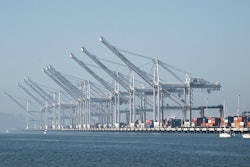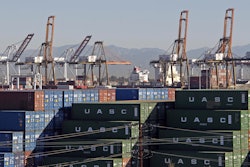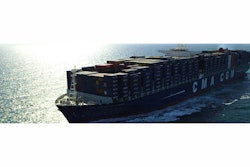
The Transpacific Stabilization Agreement (TSA) has recommended a general rate increase (GRI) on Feb. 1, 2016 in the amount of $100 per 40-foot container (FEU) for cargo moving via the U.S. West Coast, and $200 per FEU for cargo moving via the U.S. East and Gulf Coasts, according to American Shipper.
The GRI will not apply to refrigerated shipments, which are rated separately.
TSA, a discussion agreement, said its 15 members, which include most of the leading container carriers in the Asia-U.S. trade, agreed on the need for the across the board increase in dry cargo rates because “Declining Asian consumer and industrial demand, made worse by a strong dollar, has cut into U.S. export volumes and eroded U.S-Asia freight rates to the point where some dry cargoes are moving at levels which make them less attractive to carriers than repositioning empty containers."
TSA Executive Administrator Brian Conrad noted that westbound cargo volumes are likely to post negative growth for 2015, as orders have slowed overall, and as sourcing for many goods and raw commodities have shifted to countries with more favorable exchange rates.
“The market slowdown has been unprecedented, due primarily to weakening demand,” said Conrad. “Lines don’t envision sustained low rates growing the market, and see little benefit in growing market share at current rate levels. The challenge now is to generate sufficient revenue to maintain service levels and make a reasonable contribution to the round-trip sailing.”
To read more, click HERE.


















